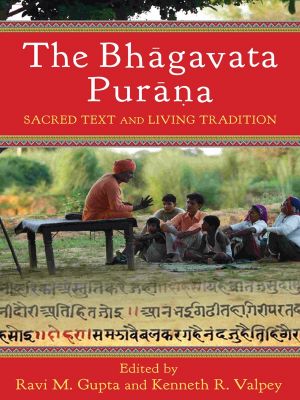The Bhagavata Purana

- Authors
- Gupta, Ravi M.
- Publisher
- Columbia University Press
- Tags
- religion , hinduism , sacred writings , history , asia , india & south asia , rel032030 , his017000
- ISBN
- 9780231531474
- Date
- 2013-03-19T00:00:00+00:00
- Size
- 17.50 MB
- Lang
- en
A vibrant example of living literature, The Bhagavata Purana is a versatile Hindu sacred text containing more than 14,000 Sanskrit verses. Finding its present form around the tenth century C.E., the work inspired several major north Indian devotional (bhakti) traditions as well as schools of dance and drama, and continues to permeate popular Hindu art and ritual in both India and the diaspora. Introducing The Bhagavata Puranas key themes while also examining its extensive influence on Hindu thought and practice, this collection conducts the first multidimensional reading of the texts entire twelve volumes.The Bhagavata Purana is a hard-to-classify embodiment of classical Indian cultural, religious, and philosophical thought. Its language and poetic expression are on par with the best of Sanskrit poetry (kavya), while its narrative structure holds together tightly as a literary work. Its theological message centers on devotion to Krishna and Vishnu, while its...
A vibrant example of living literature, The Bhāgavata Purāna is a versatile Hindu sacred text containing more than 14,000 Sanskrit verses. Finding its present form around the tenth century C.E., the work inspired several major north Indian devotional (bhakti) traditions as well as schools of dance and drama, and continues to permeate popular Hindu art and ritual in both India and the diaspora. Introducing The Bhāgavata Purāna’s key themes while also examining its extensive influence on Hindu thought and practice, this collection conducts the first multidimensional reading of the text’s entire twelve volumes. The Bhāgavata Purāna is a hard-to-classify embodiment of classical Indian cultural, religious, and philosophical thought. Its language and poetic expression are on par with the best of Sanskrit poetry (kāvya), while its narrative structure holds together tightly as a literary work. Its theological message centers on devotion to Krishna and Vishnu, while its philosophical content is grounded solidly in the classical traditions of Vedānta and Sāmkhya. Each essay in this volume focuses on a key theme of The Bhāgavata Purāna and its subsequent presence in Hindu dance, music, ritual recitation, and commentary. The authors consider the relationship between the sacred text and the divine image, the text’s metaphysical and cosmological underpinnings, its shaping of Indian culture, and its ongoing relevance to contemporary Indian concerns. A glossary aids in the understanding of the work. Featuring original, expert scholarship, this volume is an essential companion for courses and research on India, Hinduism, and related topics.
A vibrant example of living literature, The Bhagavata Purana is a versatile Hindu sacred text containing more than 14,000 Sanskrit verses. Finding its present form around the tenth century C.E., the work inspired several major north Indian devotional (bhakti) traditions as well as schools of dance and drama, and continues to permeate popular Hindu art and ritual in both India and the diaspora. Introducing The Bhagavata PuranaOCOs key themes while also examining its extensive influence on Hindu thought and practice, this collection conducts the first multidimensional reading of the textOCOs entire twelve volumes.
The Bhagavata Purana is a hard-to-classify embodiment of classical Indian cultural, religious, and philosophical thought. Its language and poetic expression are on par with the best of Sanskrit poetry (kavya), while its narrative structure holds together tightly as a literary work. Its theological message centers on devotion to Krishna and Vishnu, while its philosophical content is grounded solidly in the classical traditions of Vedanta and Samkhya. Each essay in this volume focuses on a key theme of The Bhagavata Purana and its subsequent presence in Hindu dance, music, ritual recitation, and commentary. The authors consider the relationship between the sacred text and the divine image, the textOCOs metaphysical and cosmological underpinnings, its shaping of Indian culture, and its ongoing relevance to contemporary Indian concerns. A glossary aids in the understanding of the work. Featuring original, expert scholarship, this volume is an essential companion for courses and research on India, Hinduism, and related topics.